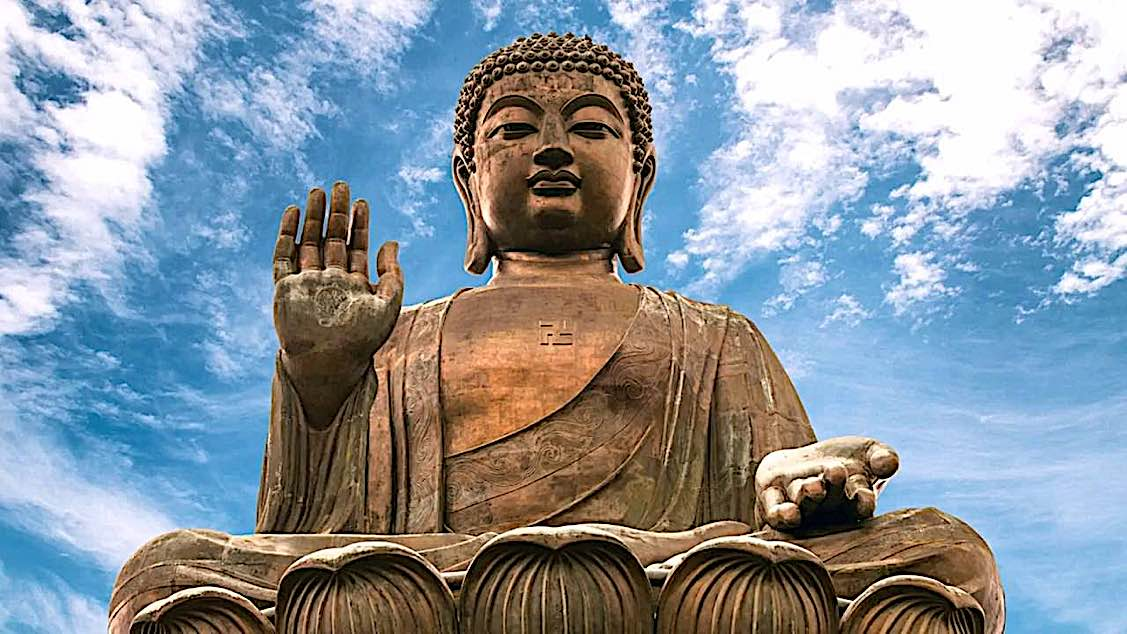Yamaoka Tesshu, as a young student of Zen, visited one master after another. He called upon Dokuon of Shokoku.
Desiring to show his attainment, he said: “The mind, Buddha, and sentient beings, after all, do not exist. The true nature of phenomena is emptiness. There is no realization, no delusion, no sage, no mediocrity. There is no giving and nothing to be received.”
Dokuon, who was smoking quietly, said nothing. Suddenly he whacked Yamaoka with his bamboo pipe. This made the youth quite angry.
“If nothing exists,” inquired Dokuon, “where did this anger come from?”
I’m fixated on the smoking Zen master. Tobacco was not known in China until the seventeenth century. The koans are much older than that. Opium was used in China by the seventh century, so there’s that.
I’ve never seen any mention of smoking or any other drugs in other koans.
Anger is a source of delusion. But it sure is real. As an addiction/attachment, to truly divest myself of all anger would, I think, be harder than kicking any habit. Anger seems like a reflexive response that rises immediately in the mind.
I really want to know what was in that bamboo pipe.
Anger arises from delusion and perpetuates delusion. But the source of delusion is conceit rooted in the ignorance I am.
The student in the parable makes the common mistake of failing into nihilistic views. If the I am conceit is empty of a separate self. If the I am conceit is changing and empty. Then it doesn’t exist. It is nothing.
But the Buddha said in my favorite sutra that the point is not to be caught by the I am conceit. To not even give rise to the thought I exist or I do not exist. Essentially, to overcome the attachment to I making completely and stop trying to work out questions like is it or is it not.
The Buddha continued, “If, when he considers the six bases for wrong views, a bhikshu does not give rise to the idea of ‘I’ or ‘mine,’ he is not caught in the chains of this life. Since he is not caught in the chains of this life, he has no fear. To have no fear is to arrive at nirvana. Such a person is no longer troubled by birth and death; the holy life has been lived; what needs to be done has been done; there will be no further births or deaths; and the truth of things as they are is known. Such a bhikshu has filled in the moat, crossed the moat, destroyed the enemy citadel, unbolted the door, and is able to look directly into the mirror of highest understanding.
Bhikshus, that is the Way of the Tathagata and those who have attained liberation. Indra, Prajapati, Brahma, and the other gods in their entourage, however hard they look, cannot find any trace or basis for the consciousness of a Tathagata. The Tathagata is a noble fount of freshness and coolness. There is no great heat and no sorrow in this state. When recluses and brahmans hear me say this, they may slander me, saying that I do not speak the truth, that the monk Gautama proposes a theory of nihilism and teaches absolute nonexistence, while in fact living beings do exist. Bhikshus, the Tathagata has never taught the things they say. In truth, the Tathagata teaches only the ending of suffering in order to attain the state of non-fear. If the Tathagata is blamed, criticized, defamed, or beaten, he does not care. He does not become angry, walk away in hatred, or do anything in revenge. If someone blames, criticizes, defames, or beats the Tathagata, how does he react? The Tathagata thinks, ‘If someone respects, honors, or makes offerings to a Tathagata, the Tathagata would not on that account feel pleased. He would think only that someone is doing this because the Tathagata has attained the fruits of awakening and transformation.’ ”
And much earlier in the sutra.
“Bhikshus, a person who studies that way can be compared to a man trying to catch a poisonous snake in the wild. If he reaches out his hand, the snake may bite his hand, leg, or some other part of his body. Trying to catch a snake that way has no advantages and can only create suffering.
This student caught the teachings by the tail and was bitten.
https://plumvillage.org/library/sutras/discourse-on-knowing-the-better-way-to-catch-a-snake
So the self is not separate but is one with all beings. Given that we don’t understand anything scientifically about consciousness, this seems reasonable, even likely. The fact that embracing it as a truth leads to a more harmonious existence is the icing on the cake.
Yeah. Which also means we transcend birth and death. Ride its waves over many lifetimes. And there’s nothing to fear.
Thich Nhat Hanh used the term interbeing. The Buddha used no self as an antidote to the atman (Hindu concept of the soul).
But he didn’t mean living beings don’t exist. Just not in the way egos tend to think they do as unchanging, static things inside us separate from the world.
I like the term “interbeing” - Thích Nhất Hạnh conveyed some really powerful ideas quite succinctly. The idea that life and consciousness is shared by all beings makes sense - but it’s sometimes extremely difficult to realize and hold that awareness in practice.
Yeah yeah, but what was in the pipe?
Either opium or there was no pipe and someone embellished the original story is my thought.
From https://en.m.wikipedia.org/wiki/Cannabis_in_China
Má (Mandarin pronunciation: [mǎ]), a Chinese word for cannabis, is represented by the Han character 麻.The term ma, used to describe medical marijuana by 2700 BCE, is the oldest recorded name for the hemp plant.

